In the life of a gardener, few things are sadder than nurturing a plant, harvesting the tasty fruit or veggie, eating it… and discovering that it tastes terrible.
This happened to me a couple years ago with the carrots I grew and forgot to fertilize regularly.
It can happen with all sorts of plants, including other Umbellifers – like celery.
And since it is already a strong-tasting veggie, the last thing you want is for those stalks to taste so acrid you can barely stand to eat them. What a sad culmination of your growing efforts!
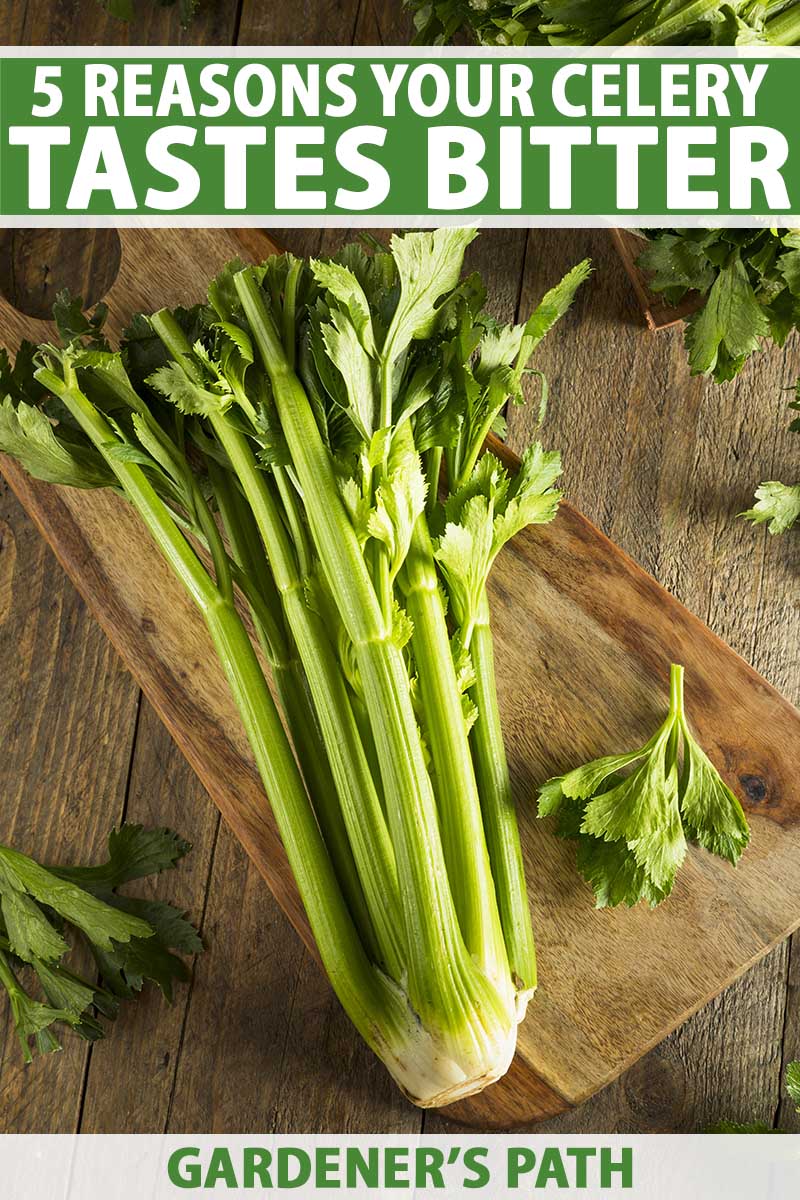
We link to vendors to help you find relevant products. If you buy from one of our links, we may earn a commission.
If you’ve ever harvested disappointingly unappealing Apium graveolens or want to make sure your current crop zips with tasty but not overbearing flavor, this article is for you.
You can learn more about growing celery in your garden in our guide.
Here’s what I’ll cover in this article:
5 Reasons Why Your Celery Tastes Bitter
1. Not Enough Nutrients
As I discovered with my bitter carrots, a lack of nutrients can result in a poorly fed, bitter-tasting plant.
When I was new to gardening, I didn’t think too hard about the soil where I planted my seeds.
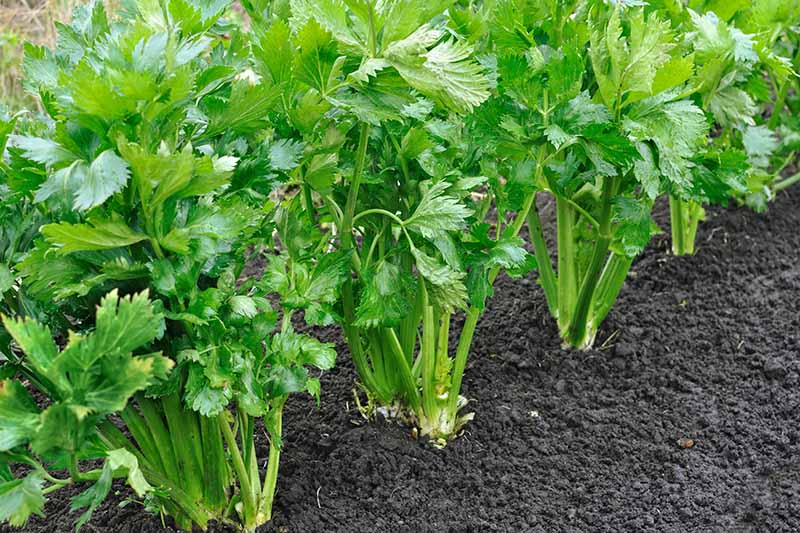
I usually just dumped some potting mix from the store into a little raised bed, and that would adequately feed my herbs, flowers, and small collection of veggies for the summer.
My mom had a compost pile where I dumped eggshells and carrot peels to become smelly mush, but as a teenager I didn’t really make the connection between the compost pile and the plants in the garden.
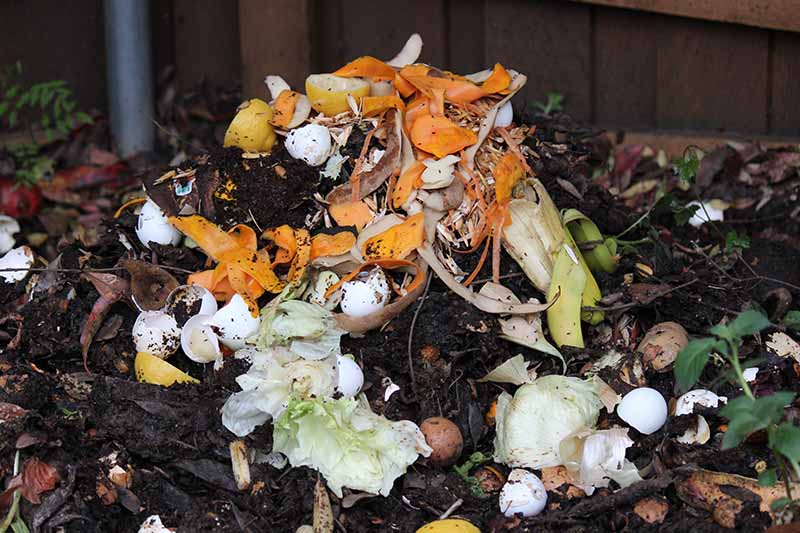
After a few rounds of harvesting acrid vegetables, I realized that getting the soil composition right and feeding the plants regularly is crucial if you want to eat homegrown produce that tastes good.
To put it simply, if you aren’t giving the plants what they need in order to thrive, they suffer. And an undernourished plant won’t taste nice.
Celery is a heavy feeder, but it’s an easy plant to nourish.All it needs is an application of balanced fertilizer every three to four weeks in order to stay happy.
Vigoro Tomato and Vegetable Plant Food
I like to use this 12-10-5 (NPK) product from Vigoro, available at the Home Depot.
It’s also a good idea to amend your soil with compost or well-rotted manure before planting your celery, giving it a nutrient-rich place to grow.
2. Too Much Heat
Celery thrives in places where nights are a cool 50°F and days don’t exceed 70 to 80°F. If temperatures rise into the 90s – especially as the stalks reach maturity – the heat can cause the stalks to turn bitter.
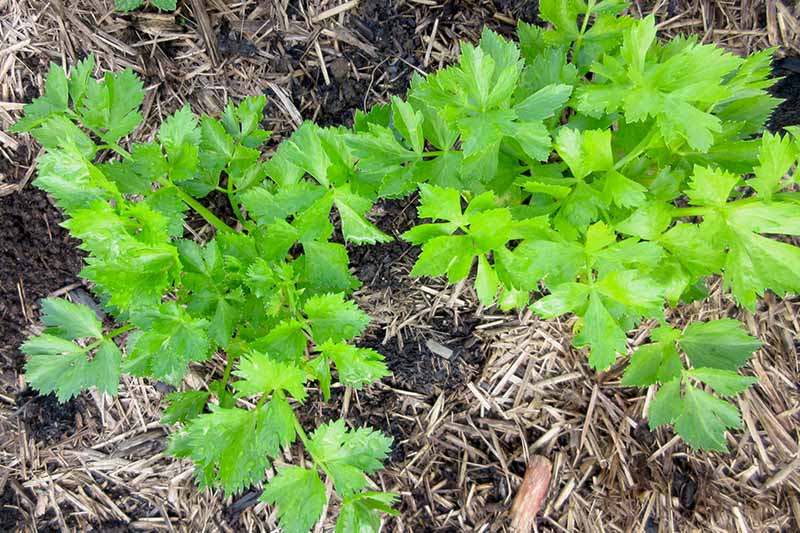
To protect your plants during heatwaves, water them early in the morning to keep the soil moist and cool throughout the day, and mulch with straw or another light-colored material.
This helps to keep the soil and roots from overheating.
You can also erect a shade cloth that blocks 30 to 50 percent of the light, like this one from Amazon, leaving it up during the hottest parts of the day.
3. A Lack of Water
If it doesn’t get enough water, celery can produce stringy, bitter stalks. Each plant needs at least one to one and a half inches of water every week, and if it doesn’t get that moisture, it’ll get stressed.
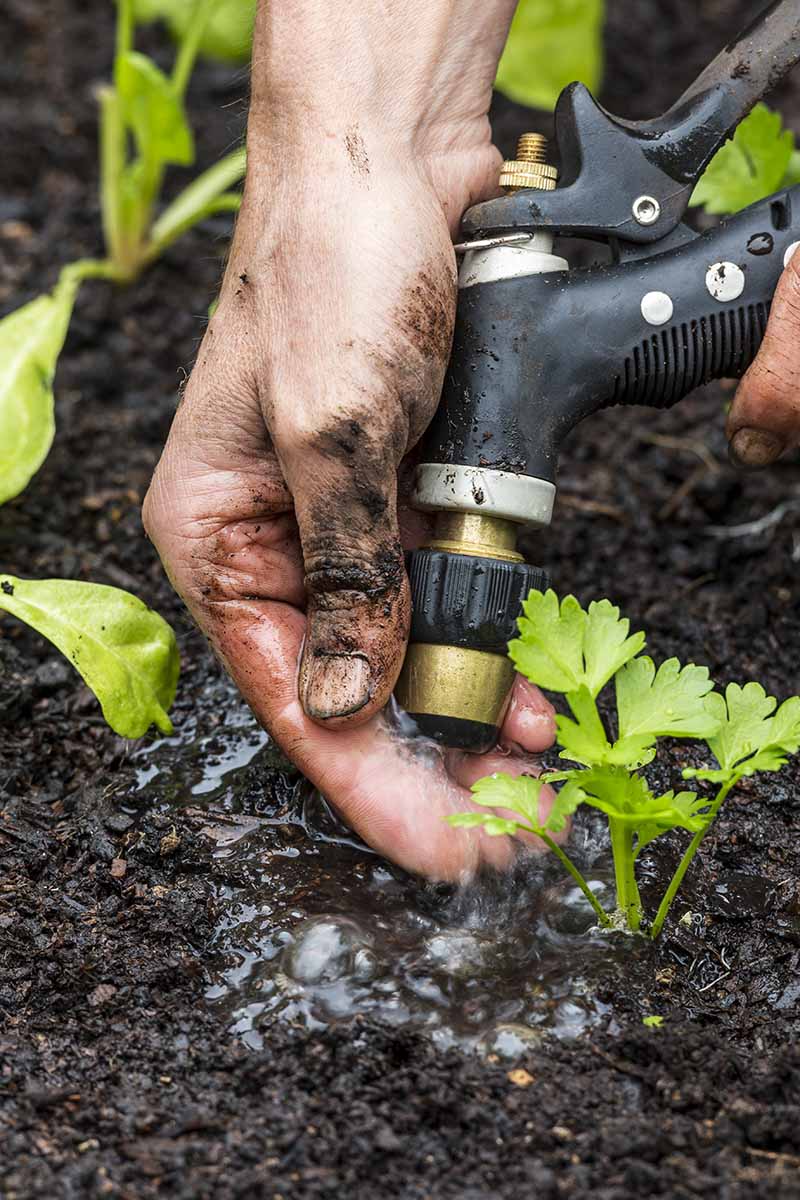
So make sure you’re consistently watering your plants. If you’re prone to forgetting, as I sometimes am, set a daily reminder on your phone to check the moisture level of the soil.
If you poke your finger three inches down and feel dryness, it’s time to water the thirsty plants.
4. An Overly Mature Plant
Cheese and wine may become perfect with age, but celery does not.
It can be tough to know when to harvest the verdant stalks, but if you wait too long, you risk harvesting tough, bitter, stringy celery.
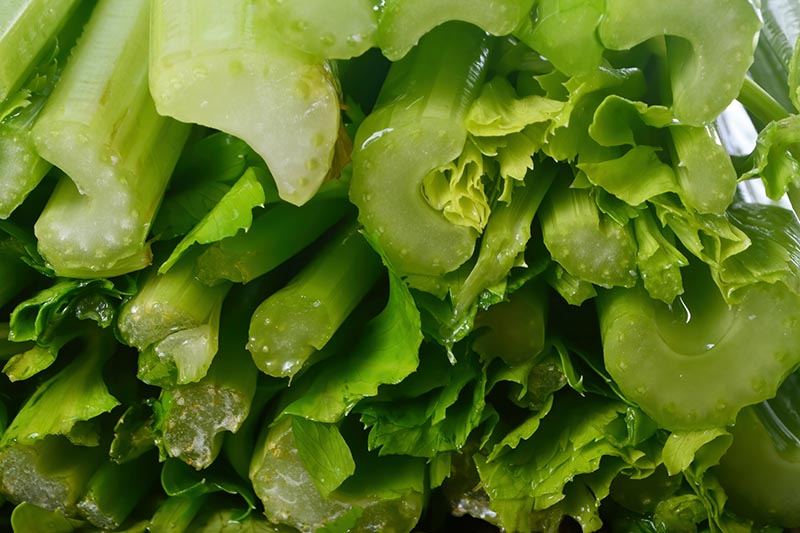
Yuck!
Thankfully, there are two easy ways to know when your plant is ready for harvest:
1. It’s been about 130-140 days since the seedlings germinated.
2. Stalks are six inches long from the base to the first leaf.
So get out your ruler and do some measuring. And check your gardening journal, in which you hopefully marked the date of germination if you grew the plant from seed.
If you need extra help figuring out when to harvest, check out our guide to harvesting celery for more tips.
5. Stalks That Haven’t Been Blanched
Maybe you gave your plants the right amount of water and fertilizer, kept them cool in hot weather, and harvested the stalks at the right time, but they’re still bitter.
Why?
Take a look at the color. Are the stalks a bright, deep green?
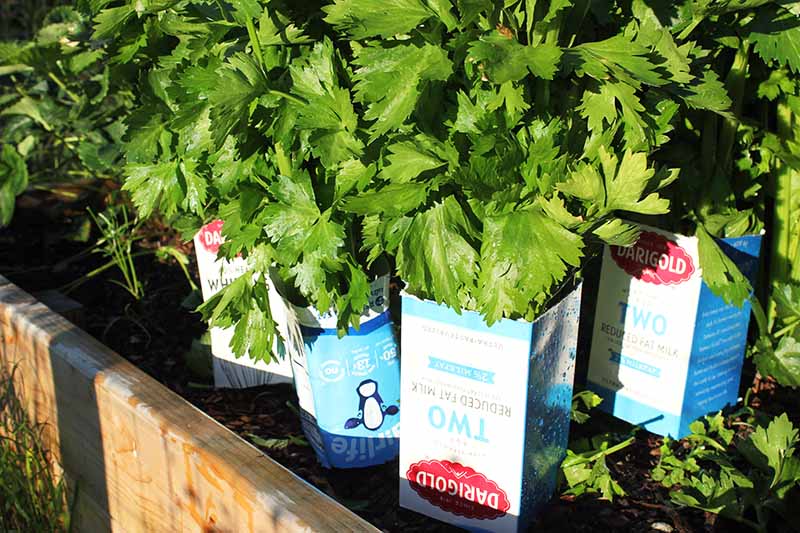
For sweeter stalks, you’ll want to blanch the celery in the garden by covering them with newspaper or milk cartons about two weeks before harvest.
This blocks the sun from reaching the stalks, preventing photosynthesis and chlorophyll production, and resulting in a sweeter, lighter-colored plant.
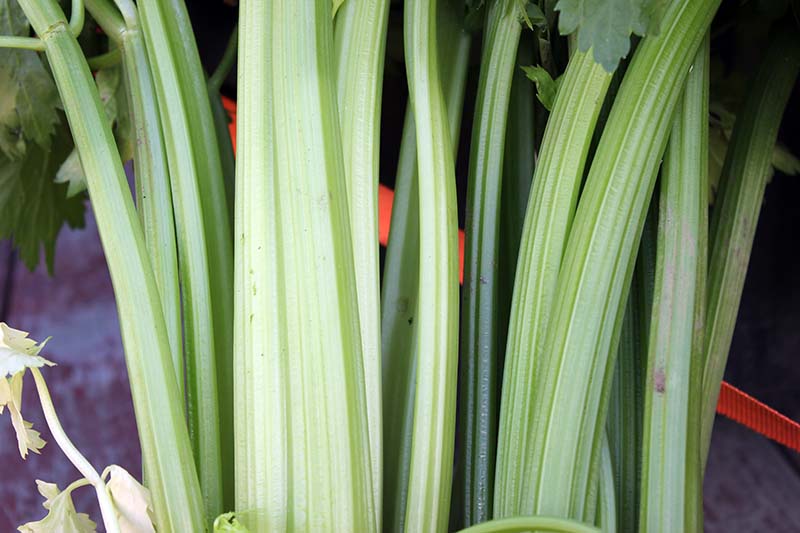
In the photo above, the stalks on the left-hand side have been blanched, while the stalks on the right-hand side have not.
For more details on how and when to do this, check out our guide to blanching celery in the garden.
You can also grow self-blanching varieties, like ‘Golden Self-Blanching.’
If it’s too late to blanch – maybe you’ve already harvested all your plants – tease the head apart to find the lighter, naturally blanched inner stalks.
These will taste sweeter than the outer stalks, so they’re ideal for when you want to enjoy a raw stick or two for an afternoon snack.
Use the greener stalks for cooking. As you’ll see in a moment, cooking the bitter stalks can help to improve their flavor.
What to Do with Bitter Celery
Now that you know how to prevent bitter flavors from developing in your celery, you can keep your next crop healthy and sweet.
But what if you already harvested celery that’s tough, stringy, and bitter? What can you do with it?
Try cutting it into small pieces and sauteing it in dairy-free margarine until it begins to turn tender, and then add it to this vegan Thanksgiving stuffing from our sister site, Foodal.
Sauteing it will soften the harsh flavor but help it to retain its crisp texture in your stuffing.
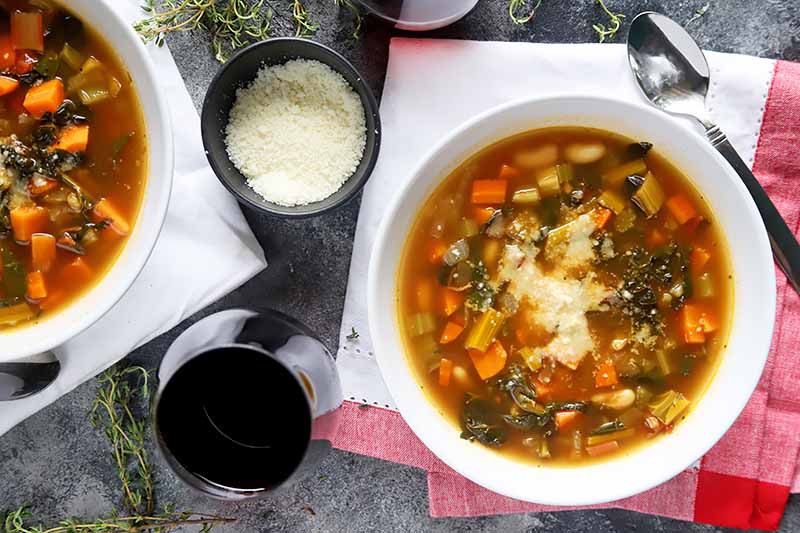
Or, simmer it into Foodal’s delicious, autumn-appropriate vegetable minestrone.
Like sauteing, the act of simmering or boiling the celery in a soup like this one brings out its milder side.
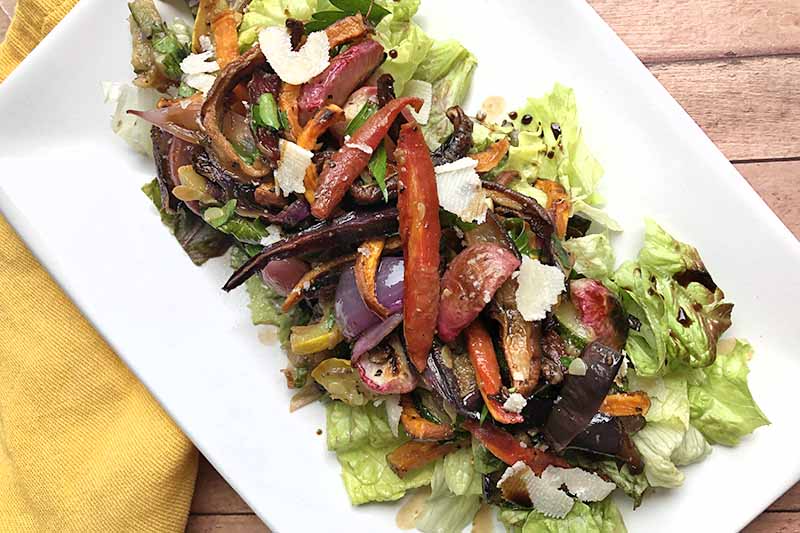
To transform it into a tasty side dish, try caramelizing and roasting it along with onions, mushrooms, carrots, zucchini, and other scrumptious veggies in this recipe for a roasted vegetable and herb salad, also from Foodal.
See? Even if you harvested a bunch of bitter stalks, it doesn’t mean your hard work was for naught. There’s still plenty you can do to make acrid stalks shine.
A Sweet Cel(ery)bration
I hope this article has lifted your spirits if you recently took a huge bite of garden-grown celery and nearly wilted at the overwhelming flavor.

Or maybe it caught you in time to blanch the stalks, or add a bit of fertilizer, water, or protective shade cloth to your stressed-out plants.
If you have any additional tips to salvage bitter celery, share your advice in the comments below!
Now, go forth and grow yourself some sweet-tasting stalks.
And remember to check out these articles on growing flavorful Umbellifers in your garden next:
- How to Plant and Grow Dill
- How to Grow Carrots in the Garden
- Growing Lovage: An Uncommon Herb with Many Uses
Photos by Fanny Slater, Meghan Yager, and Laura Melchor © Ask the Experts, LLC. ALL RIGHTS RESERVED. See our TOS for more details. Product photos via Home Depot. Uncredited photos: Shutterstock.
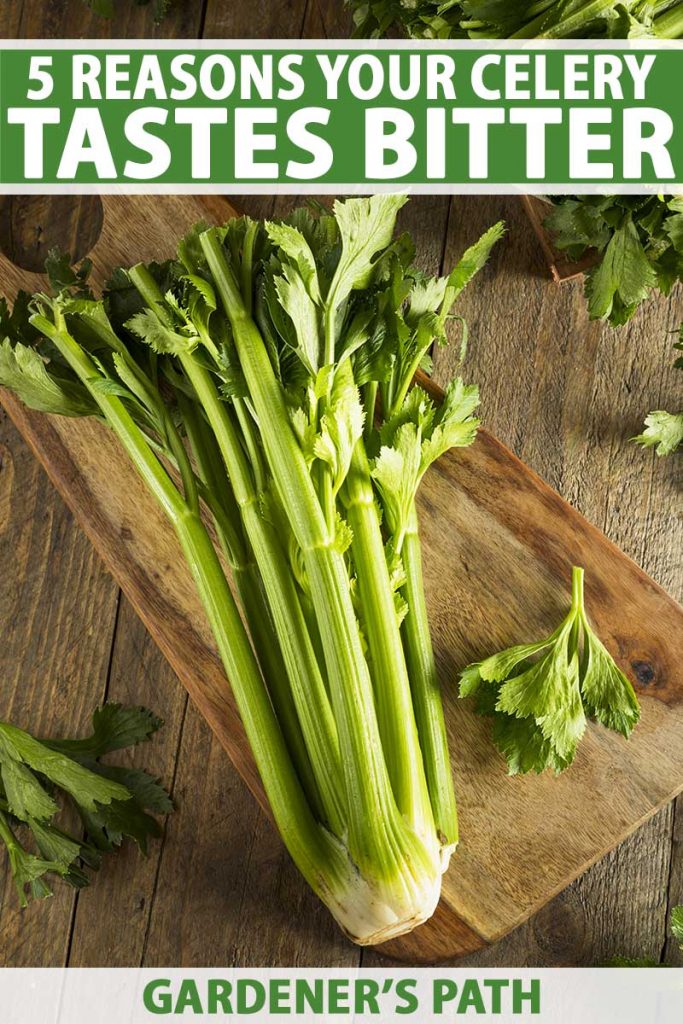
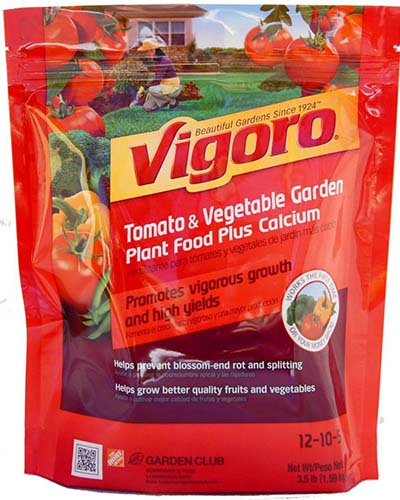


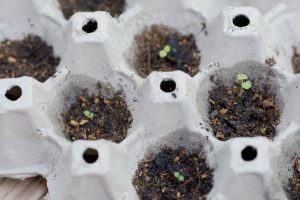
I am very happy because I got to know you????????????????????..
Thank you for this information..????
It came on time..????????
I wish you success????
Asraa
From Kuwait ????????
Hi Asraa,
I’m glad this information was helpful!
Very interesting. I was at my farmer’s mkt today and went home with 3 giant stalks to juice and IT WAS HORRIBLY BITTER. I didn’t understand why since previously when I bought my celery from Whole Foods they were delicious and almost sweetish saltish tasting. Thank you! You are so smart!
Thank you Roxanne, we’re glad the article was helpful!
If it was sauteed in butter, it is not vegan, yes?
Sorry for the confusion, Richard. Some of our writers occasionally refer to vegan margarine or butter as butter. A dairy-free version should be used to make vegan stuffing. We’ll correct this!